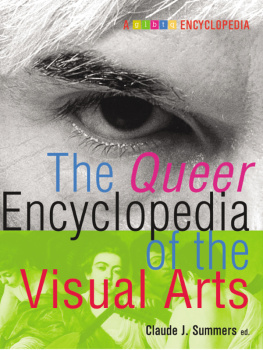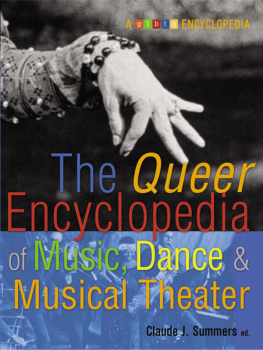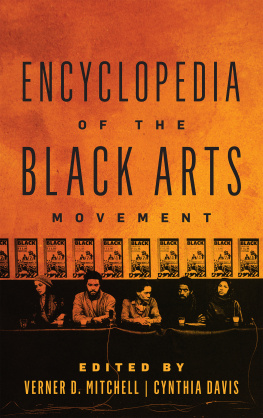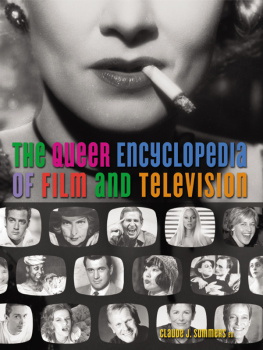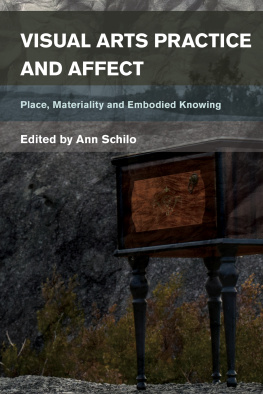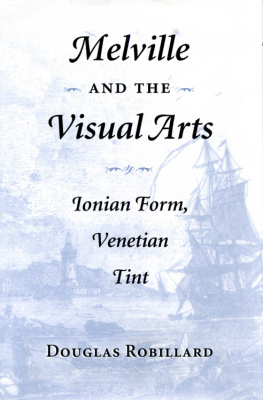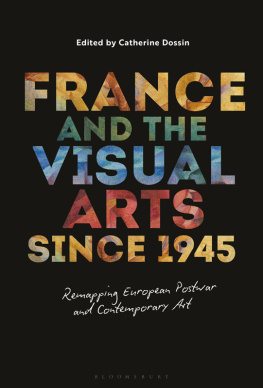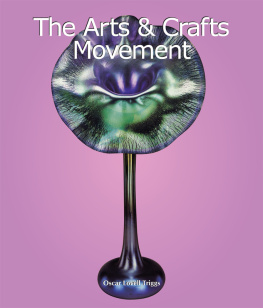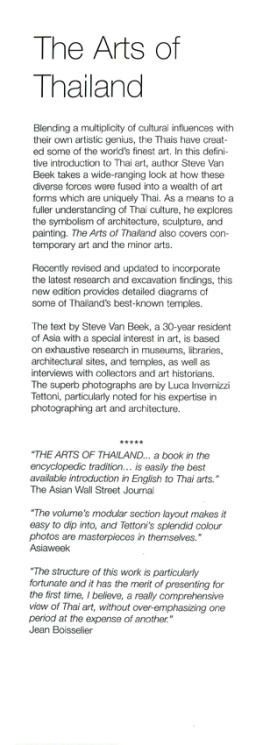The Queer Encyclopedia of the Visual Arts
Claude J. Summers
Editor
Copyright 2004 by glbtq, Inc.
All rights reserved. Except for brief passages quoted in newspaper, magazine, radio, or television reviews, no part of this book may be reproduced in any form or by any means, electronic or mechanical, including photocopying or recording, or by information storage or retrieval system, without permission in writing from the Publisher.
Published in the United States by Cleis Press Inc.,
P.O. Box 14684, San Francisco, California 94114.
Printed in the United States.
Cover design: Scott Idleman
Cover photograph: Photograph of Andy Warhol by Ed Kashi / CORBIS
2004 Andy Warhol Foundation for the Visual Arts / Artists Rights Society (ARS), New York
Book design: Karen Quigg
Cleis Press logo art: Juana Alicia
First Edition.
10 9 8 7 6 5 4 3 2 1
Archives, libraries, service bureaus, and individuals have been indispensable in providing access to the images that illustrate The Queer Encyclopedia of the Visual Arts. These organizations and individuals deserve particular thanks. Archiv fr Sexualwissenschaft, Berlin for providing access to the image on page 58. J. Peter Benet for creating and granting permission to use the image on page 283. Cleis Press for providing and granting permission to use the image on page 266. Clipart.com for providing access to its copyrighted material (Copyright 2003-2004 Clipart.com) and granting permission to use the images on pages 51, 60, 150, 161, 170, 224, 291, and 297. The Library of Congress Prints and Photographs Division for providing access to and duplicating the images on pages 39, 66, 143, 167, 177, 194, 197, 198, 207 (lower left), 215, 227, 289, 330, 330, 341, and 347. McCormick Library of Special Collections, Northwestern University for providing access to the images on pages 46, 48, 49, 102, and 245. The Naval Historical Foundation for access to and duplication of the image on page 320. Northwestern University Library for providing access to the wealth of material contained in its open stacks. Northwestern University Library Art Collection for access to the images on pages 1, 3, 57, 65, 71, 95, 108, 122, 124, 129, 130, 144 (top right and bottom left), 169, 195, 207 (upper right), 212, 219, 230, 243, 263, 279, 286, 291, 292, 301, 303, 306, 318, and 322.
LIBRARY OF CONGRESS CATALOGING-IN-PUBLICATION DATA
The queer encyclopedia of the visual arts / Claude J. Summers, editor.
p. cm.
Includes bibliographical references and index.
ISBN 1-57344-191-0 (pbk.)
1. Homosexuality and artEncyclopedias. 2. ArtEncyclopedias.
I. Summers, Claude J.
N72.H64Q44 2004
704'.08664'03dc22
2004004263
eISBN: 978-1-57344-874-1
For Ted, again;
and for Wik, the onlie begetter;
and for Linda Rapp, Robert Herndon, and Tim Flemming
ACKNOWLEDGMENTS
A collaborative project of the scope of The QueerEncyclopedia of the Visual Arts necessarily depends on the kindness and cooperation of numerous individuals, including especially the authors of the articles.
I owe most to Andrew Wik Wikholm, President of glbtq, Inc., whose vision and commitment and enthusiasm have made this book possible. Ted-Larry Pebworth has been a supportive partner and collaborator in many ways beyond the indexing and copyediting skills that he has deployed in this project. Linda Rapp, friend and assistant, has generously contributed her time, energy, and expertise.
I am grateful to all those who offered advice and made suggestions, especially as to topics and contributors. Tee Corinne, Patricia Simons, and Patricia Juliana Smith have been especially helpful as members of the www.glbtq.com advisory board. Michael Tanimura, production manager at glbtq, discovered a number of inconsistencies and errors and knew how to correct them. Betsy Greco, glbtq project administrator, has been unfailingly efficient and cheerful.
Work on this project has been sustained by the support of numerous friends, including Diana and Peter Benet, Helen Brooks, Neil Flax, John Edward and Willene Hardy, Raymond Frontain, Robert Herndon and Tim Flemming, George Koschel, and Gary and Mary Ann Stringer.
Finally, we are also grateful to the following: Archiv fr Sexualwissenschaft, Berlin; Library of Congress Prints and Photographs Division; McCormick Library of Special Collections, Northwestern University; National Archives and Records Administration; Northwestern University Library Art Collection.
Introduction
THE QUEER ENCYCLOPEDIA OF THE VISUAL ARTS surveys and introduces a remarkable cultural achievement, one that includes both the contributions of gay, lesbian, bisexual, transgender, and queer people to the visual arts and their representation in the visual arts. That is, this work is interested in glbtq individuals not only as makers of art, but also as subjects and objects of art.
Presenting nearly 200 articles on individuals, artistic movements, periods, nations, and topics such as AIDS activism and censorship, The Queer Encyclopedia of theVisual Arts offers a revisionist art history, one that places the achievements of gay, lesbian, bisexual, transgender, and queer artists in historical contexts and that privileges the representation of subjects that have traditionally been censored or marginalized.
Celebrating the richness and variety of queer contributions to the visual arts, this book presents that achievement as a significant cultural legacy. This legacy includes accomplishments as diverse as the homoerotic images on Greek vase paintings and the sometimes graphic depictions in ancient Indian temple sculpture; the works of Michelangelo and Caravaggio; the self-portraits of Frida Kahlo and the screaming popes of Francis Bacon; the architecture of Julia Morgan and Philip Johnson; the photography of Claude Cahun, Robert Mapplethorpe, and Tee Corinne; the Pop Art of Andy Warhol and the narrative paintings of George Dureau; and the contemporary art of Bhupen Khakhar, David Hockney, Flix Gonzlez-Torres, and Janet Cooling. It encompasses the religious expressions of El Greco and the pornographic fantasies of Tom of Finland, no less than the naturalism of Winslow Homer, the Art Deco nudes of Tamara de Lempicka, and the anthropomorphic graffiti drawings of Keith Haring.
The queer presence in the visual arts is so various and pervasive that it resists neat summary. Indeed, it is an
integral part of humanitys artistic expression, and as diverse as humanity itself. It can scarcely be divorced from mainstream art, for so many of the worlds most prominent artists have in fact been of alternate sexualities. Yet there is real value in seeing queer art in its own terms as an expression of a queer artistic impulse and as a documentation of queer experience.
Queer art has so often been denigrated, suppressed, or robbed of its specificity and roots in efforts to render it universal that it has very infrequently been seen whole and in the contexts that gave it life. The aim of The Queer Encyclopedia of the Visual Arts is to help remedy the effects of an old but still active, homophobic project of exclusion and denial, by in fact presenting queer art whole and in the multiple contexts that helped shape it. Doing so yields new insight into the creation of art and increases our understanding of a wide range of artistic achievements.
Recovering and Reclaiming Our Artistic Heritage
Recovering our cultural heritage is a crucially important endeavor for everyone, but it is especially significant for gay men, lesbians, and others who have grown up in families and societies in which their sexual identities have been ignored, concealed, or condemned. They often come to a realization of their difference with little or no understanding of alternate sexualities beyond the negative stereotypes that pervade contemporary society, and they usually feel isolated and frightened at the very time they most need reassurance and encouragement.

